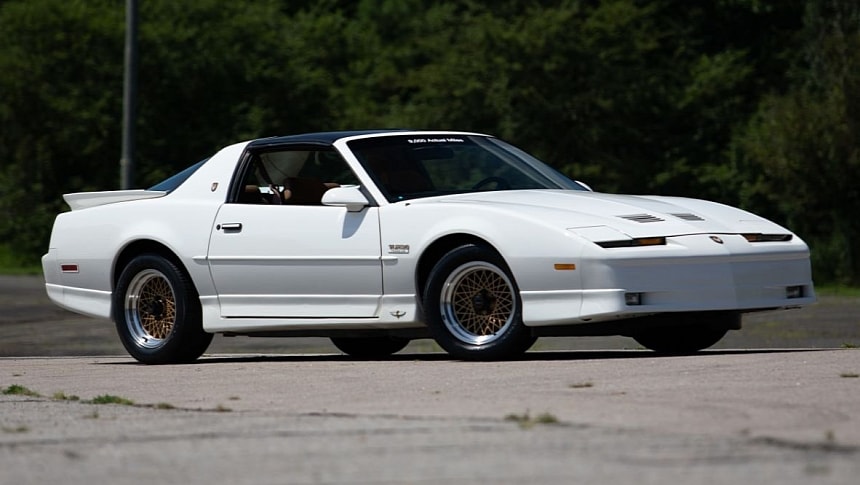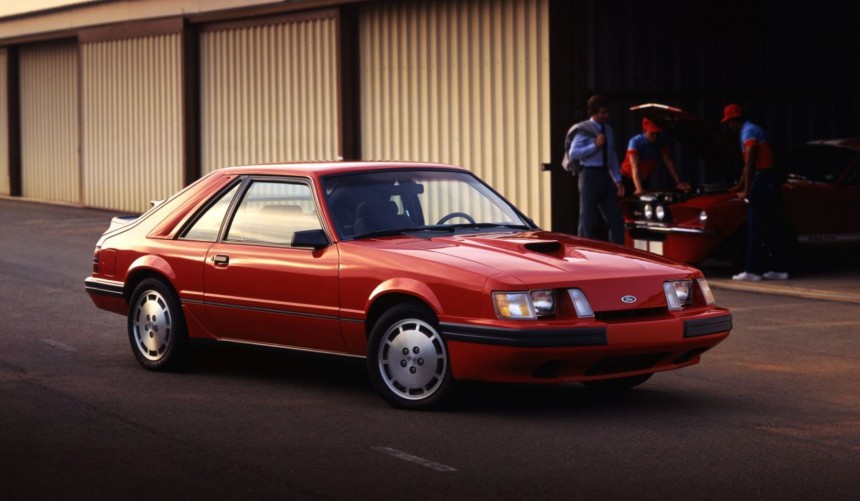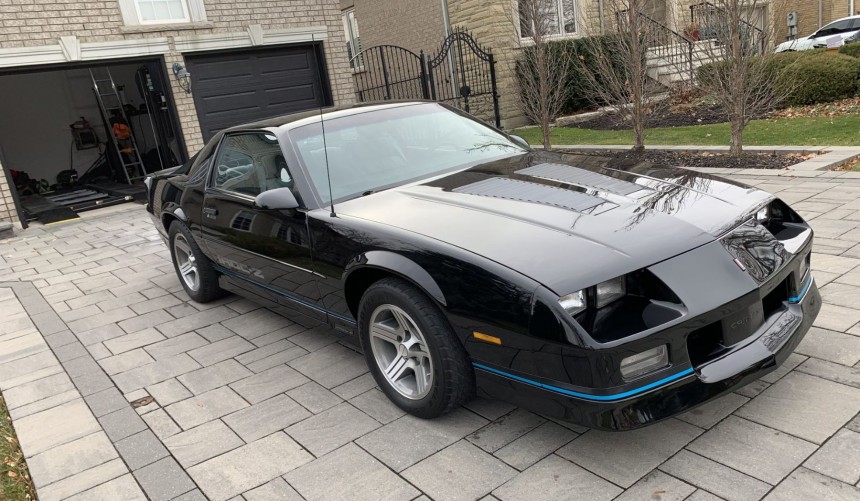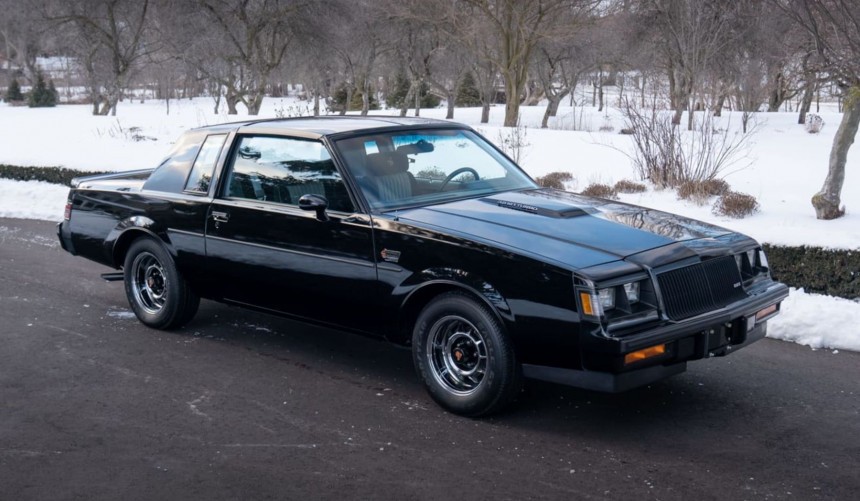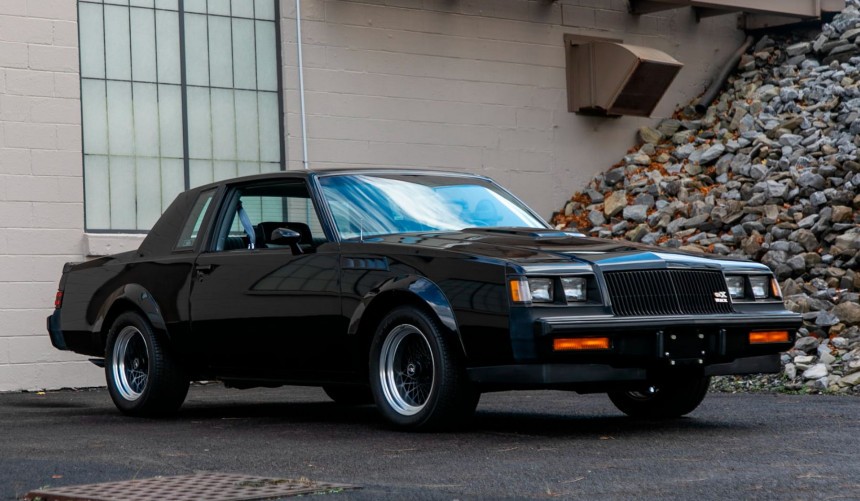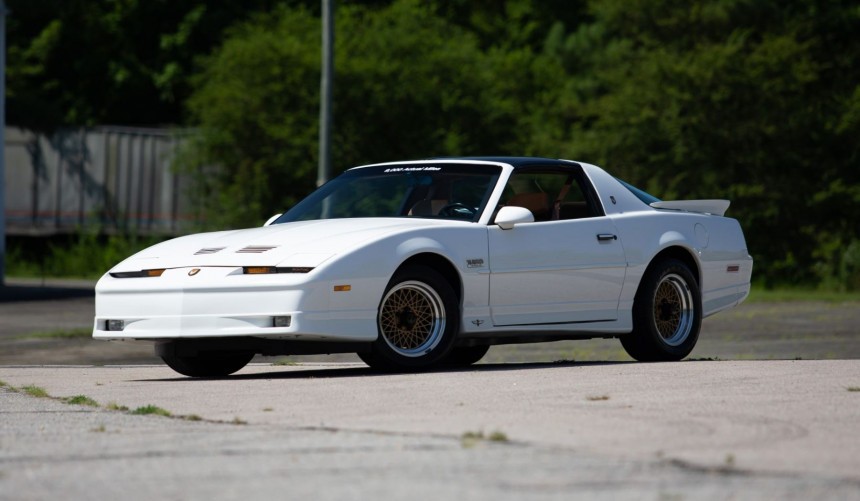Though the golden age of muscle ended abruptly after the early 1970s, giving way to grossly underpowered econocars, a decade earlier, some surprisingly quick muscle cars were roaming the roads.
Though several high-performance cars powered by potent V8 engines were introduced in the past, the vast majority of automotive historians attribute the start of the muscle car golden age to Pontiac and its 1964 GTO.
From that point on, every single American carmaker who wanted to remain relevant started rolling out ever more powerful high-performance machines.
By 1970, factory-built performance had reached its peak, with numerous 400 hp + rides available in dealerships nationwide.
However, only three years later, these legendary cars went extinct due to stricter emission regulations, higher insurance premiums, and an economy-ravaging fuel crisis.
For nearly a decade, performance enthusiasts had nothing exciting to look at when visiting a dealership; nevertheless, throughout the 1980s, the muscle car began showing signs of revival.
Though horsepower-wise, the numbers never reached the same levels, some 1980s muscle cars packed a lethal punch, as evidenced by their acceleration and quarter-mile figures.
The most impressive performance-oriented Fox body 'Stang, entered production in 1984 and was the brainchild of Ford's Special Vehicle Operations (SVO) department.
Save for the bumpers, scooped hood, and wheels, the Mustang SVO looked much like your average three-door hatchback Fox body. However, it was a completely different car underneath.
It packed a revamped suspension system with KONI adjustable shocks, larger four-wheel disc brakes, a limited-slip differential, and last, but certainly not least, a 2.3-liter turbocharged inline-four that made between 175 and 200 hp, depending on the model year.
I know purists will hate me for including a four-cylinder-powered Fox body Mustang on a list of muscle cars, but while it lacked four cylinders, the SVO earned the right to make this list thanks to its performance.
According to Ford, and backed up by independent tests, the 1986 SVO could accelerate from 0 to 60 mph (97 kph) in 7.5 seconds. Moreover, it ran the quarter mile in the mid-15-second range at 90 mph (145 kph), which was not that far from what many muscle cars could achieve during the late 1960s, with much more powerful engines under the hood.
Unlike the Mustang, the Camaro didn't morph into an econocar, and Chevy tried to offer some level of performance throughout the mid-1970s onwards.
In 1981, the pony car was finally redesigned. Based on the F-body platform, it looked more modern and continued to be available in a performance guise -albeit with diminished output figures.
The performance-oriented Z28 Camaro was boosted in 1985 with the addition of a new package called IROC-Z after the International Race of Champions.
The IROC-Z Camaro was continually improved, and by 1989, it reached more-than-adequate performance levels.
In its most lethal specification, the 1989 IROC-Z was powered by a 350-ci (5.7-liter) L98 small-block V8 with tunnel port injection (TPI) rated at 230 hp.
With the 1LE option triggered, the IROC-Z received a G92 Performance Axle and had its air conditioning gutted out for maximum performance.
In this specification, which was born to homologate the model for SCCA's popular Showroom Stock racing series, the IROC-Z could accelerate to 60 mph (97 kph) from a standstill in 6.5 seconds and achieve quarter-mile runs in the high-14s at 91 mph (147 kph).
Buick introduced the second-generation Regal in 1978, and for several years, there was nothing impressive about the new model.
That changed in 1982 when, in order to boost its performance image and celebrate its success in NASCAR, the GM division released the Regal-based Grand National.
Originally intended to be a limited-production model, the Grand National featured a host of upgrades, including a front air dam, rear spoiler, bespoke seats, and a 125-hp, 252-ci (4.1-liter) V6 - albeit some cars based on the Regal Sport Coupe came with the 175-hp, 231-ci (3.8-liter) turbocharged V6.
The first Grand National was a major success, which convinced Buick to bring the model back, starting with 1984, and this time, it was only available with a turbocharged V6.
Continually developed, the GN reached its performance peak in 1987, its last year on the market. Now equipped with an intercooled V6, it had no less than 245 hp on tap.
In this configuration, the Gran National was one of the fastest American cars to be produced in the 1980s. According to multiple independent tests, it accelerated from 0 to 60 mph (97 kph) in 6.1 seconds and ran the quarter mile in the mid-14s at 92 mph (148 kph).
While impressive, the 1987 Grand National was not Buick's most lethal muscle car.
That year, the GN was joined in the division's performance lineup by the now-legendary GNX (Grand National eXperimental).
Developed in collaboration with McLaren Performance Technologies/ASC, the GNX pushed the performance envelope to outrageous levels thanks to a multitude of unique upgrades.
The list of GNX-only upgrades included subtle exterior improvements, a unique differential cover linked to a special control arm for increased traction, low-restriction exhaust with dual mufflers, or a reprogrammed Turbo Hydramatic 200-4R transmission with a bespoke torque converter cooler.
However, the most important upgrade that the GNX received was a custom Garrett AiResearch T3 turbocharger hooked to an improved intercooler that helped the 231-ci (3.8-liter) V6 spit out a grossly underrated 276 hp (real output was in the 300 hp region).
With all the unique modifications, the GNX was much faster than its "standard" performance-oriented sibling and could actually go toe-to-toe with some of the era's most potent supercars.
During a test conducted by Car and Driver magazine, the all-black monster got up to 60 mph (97 kph) in 4.9 seconds and ran the quarter-mile in 13.9 seconds at 98 mph (158 kph).
Though the Buick GNX's performance capabilities were outstanding, it wasn't the quickest muscle car of the 1980s.
That title went to the limited-edition Trans Am shown above, which was developed to celebrate the nameplate's 20th anniversary in style.
Like the Camaro, its Pontiac-badged sibling survived the Malaise era without turning into an econocar. Better still, it was the only model that kept performance alive through that dreaded period.
After the highly successful second generation was retired at the end of the 1981 model year, the all-new Firebird took its place, and, of course, the sporty Trans Am returned, keeping the performance torch lit during the new decade.
For the special 20th Anniversary Trans Am, which debuted as the pace car of the 1989 Indy 500 race, Pontiac borrowed the GNX 231-ci (3.8-liter) V6 from Buick and made it even more potent by redesigning the heads, increasing the compression ratio and upgrading the forced induction system.
Though conservatively rated at 250 hp, the engine easily made over 310 horses when put on a dyno. This claim was backed up by the anniversary edition's ability to accelerate from 0 to 60 mph (97 kph) in 4.6 seconds and blast through the quarter-mile mark in 13.4 seconds at 101 mph (162.5 kph) - according to Car and Driver magazine.
Even if it didn't feature a V8, the 1989 20th Anniversary Trans Am remains one of the greatest muscle cars ever produced by Pontiac.
From that point on, every single American carmaker who wanted to remain relevant started rolling out ever more powerful high-performance machines.
By 1970, factory-built performance had reached its peak, with numerous 400 hp + rides available in dealerships nationwide.
However, only three years later, these legendary cars went extinct due to stricter emission regulations, higher insurance premiums, and an economy-ravaging fuel crisis.
For nearly a decade, performance enthusiasts had nothing exciting to look at when visiting a dealership; nevertheless, throughout the 1980s, the muscle car began showing signs of revival.
Though horsepower-wise, the numbers never reached the same levels, some 1980s muscle cars packed a lethal punch, as evidenced by their acceleration and quarter-mile figures.
1986 Ford Mustang SVO
Save for the bumpers, scooped hood, and wheels, the Mustang SVO looked much like your average three-door hatchback Fox body. However, it was a completely different car underneath.
It packed a revamped suspension system with KONI adjustable shocks, larger four-wheel disc brakes, a limited-slip differential, and last, but certainly not least, a 2.3-liter turbocharged inline-four that made between 175 and 200 hp, depending on the model year.
I know purists will hate me for including a four-cylinder-powered Fox body Mustang on a list of muscle cars, but while it lacked four cylinders, the SVO earned the right to make this list thanks to its performance.
According to Ford, and backed up by independent tests, the 1986 SVO could accelerate from 0 to 60 mph (97 kph) in 7.5 seconds. Moreover, it ran the quarter mile in the mid-15-second range at 90 mph (145 kph), which was not that far from what many muscle cars could achieve during the late 1960s, with much more powerful engines under the hood.
1989 Chevrolet Camaro IROC Z 1LE
In 1981, the pony car was finally redesigned. Based on the F-body platform, it looked more modern and continued to be available in a performance guise -albeit with diminished output figures.
The performance-oriented Z28 Camaro was boosted in 1985 with the addition of a new package called IROC-Z after the International Race of Champions.
The IROC-Z Camaro was continually improved, and by 1989, it reached more-than-adequate performance levels.
In its most lethal specification, the 1989 IROC-Z was powered by a 350-ci (5.7-liter) L98 small-block V8 with tunnel port injection (TPI) rated at 230 hp.
With the 1LE option triggered, the IROC-Z received a G92 Performance Axle and had its air conditioning gutted out for maximum performance.
In this specification, which was born to homologate the model for SCCA's popular Showroom Stock racing series, the IROC-Z could accelerate to 60 mph (97 kph) from a standstill in 6.5 seconds and achieve quarter-mile runs in the high-14s at 91 mph (147 kph).
1987 Buick Grand National
That changed in 1982 when, in order to boost its performance image and celebrate its success in NASCAR, the GM division released the Regal-based Grand National.
Originally intended to be a limited-production model, the Grand National featured a host of upgrades, including a front air dam, rear spoiler, bespoke seats, and a 125-hp, 252-ci (4.1-liter) V6 - albeit some cars based on the Regal Sport Coupe came with the 175-hp, 231-ci (3.8-liter) turbocharged V6.
The first Grand National was a major success, which convinced Buick to bring the model back, starting with 1984, and this time, it was only available with a turbocharged V6.
Continually developed, the GN reached its performance peak in 1987, its last year on the market. Now equipped with an intercooled V6, it had no less than 245 hp on tap.
In this configuration, the Gran National was one of the fastest American cars to be produced in the 1980s. According to multiple independent tests, it accelerated from 0 to 60 mph (97 kph) in 6.1 seconds and ran the quarter mile in the mid-14s at 92 mph (148 kph).
1987 Buick GNX
That year, the GN was joined in the division's performance lineup by the now-legendary GNX (Grand National eXperimental).
Developed in collaboration with McLaren Performance Technologies/ASC, the GNX pushed the performance envelope to outrageous levels thanks to a multitude of unique upgrades.
The list of GNX-only upgrades included subtle exterior improvements, a unique differential cover linked to a special control arm for increased traction, low-restriction exhaust with dual mufflers, or a reprogrammed Turbo Hydramatic 200-4R transmission with a bespoke torque converter cooler.
However, the most important upgrade that the GNX received was a custom Garrett AiResearch T3 turbocharger hooked to an improved intercooler that helped the 231-ci (3.8-liter) V6 spit out a grossly underrated 276 hp (real output was in the 300 hp region).
With all the unique modifications, the GNX was much faster than its "standard" performance-oriented sibling and could actually go toe-to-toe with some of the era's most potent supercars.
During a test conducted by Car and Driver magazine, the all-black monster got up to 60 mph (97 kph) in 4.9 seconds and ran the quarter-mile in 13.9 seconds at 98 mph (158 kph).
1989 Pontiac 20th Anniversary Trans Am
That title went to the limited-edition Trans Am shown above, which was developed to celebrate the nameplate's 20th anniversary in style.
Like the Camaro, its Pontiac-badged sibling survived the Malaise era without turning into an econocar. Better still, it was the only model that kept performance alive through that dreaded period.
After the highly successful second generation was retired at the end of the 1981 model year, the all-new Firebird took its place, and, of course, the sporty Trans Am returned, keeping the performance torch lit during the new decade.
For the special 20th Anniversary Trans Am, which debuted as the pace car of the 1989 Indy 500 race, Pontiac borrowed the GNX 231-ci (3.8-liter) V6 from Buick and made it even more potent by redesigning the heads, increasing the compression ratio and upgrading the forced induction system.
Though conservatively rated at 250 hp, the engine easily made over 310 horses when put on a dyno. This claim was backed up by the anniversary edition's ability to accelerate from 0 to 60 mph (97 kph) in 4.6 seconds and blast through the quarter-mile mark in 13.4 seconds at 101 mph (162.5 kph) - according to Car and Driver magazine.
Even if it didn't feature a V8, the 1989 20th Anniversary Trans Am remains one of the greatest muscle cars ever produced by Pontiac.
